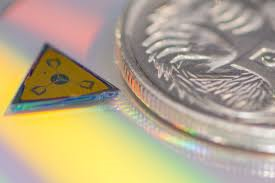
Breaking News
 Christmas Truce of 1914, World War I - For Sharing, For Peace
Christmas Truce of 1914, World War I - For Sharing, For Peace
 The Roots of Collectivist Thinking
The Roots of Collectivist Thinking
 What Would Happen if a Major Bank Collapsed Tomorrow?
What Would Happen if a Major Bank Collapsed Tomorrow?
Top Tech News
 Travel gadget promises to dry and iron your clothes – totally hands-free
Travel gadget promises to dry and iron your clothes – totally hands-free
 Perfect Aircrete, Kitchen Ingredients.
Perfect Aircrete, Kitchen Ingredients.
 Futuristic pixel-raising display lets you feel what's onscreen
Futuristic pixel-raising display lets you feel what's onscreen
 Cutting-Edge Facility Generates Pure Water and Hydrogen Fuel from Seawater for Mere Pennies
Cutting-Edge Facility Generates Pure Water and Hydrogen Fuel from Seawater for Mere Pennies
 This tiny dev board is packed with features for ambitious makers
This tiny dev board is packed with features for ambitious makers
 Scientists Discover Gel to Regrow Tooth Enamel
Scientists Discover Gel to Regrow Tooth Enamel
 Vitamin C and Dandelion Root Killing Cancer Cells -- as Former CDC Director Calls for COVID-19...
Vitamin C and Dandelion Root Killing Cancer Cells -- as Former CDC Director Calls for COVID-19...
 Galactic Brain: US firm plans space-based data centers, power grid to challenge China
Galactic Brain: US firm plans space-based data centers, power grid to challenge China
 A microbial cleanup for glyphosate just earned a patent. Here's why that matters
A microbial cleanup for glyphosate just earned a patent. Here's why that matters
 Japan Breaks Internet Speed Record with 5 Million Times Faster Data Transfer
Japan Breaks Internet Speed Record with 5 Million Times Faster Data Transfer
Key component for quantum computers miniaturized by 1000 times

Making parts like these smaller will help enable quantum computers with millions of qubits.
Above – Lead author of the study, PhD candidate Alice Mahoney, in the quantum science laboratories at the Sydney Nanoscience Hub.
The Sydney team's component, coined a microwave circulator, acts like a traffic roundabout, ensuring that electrical signals only propagate in one direction, clockwise or anti-clockwise, as required. Similar devices are found in mobile phone base-stations and radar systems, and will be required in large quantities in the construction of quantum computers. A major limitation, until now, is that typical circulators are bulky objects the size of your hand.
They used the properties of topological insulators to slow the speed of light in the material. This miniaturization paves the way for many circulators to be integrated on a chip and manufactured in the large quantities that will be needed to build quantum computers.

 The State's Last Stand
The State's Last Stand


